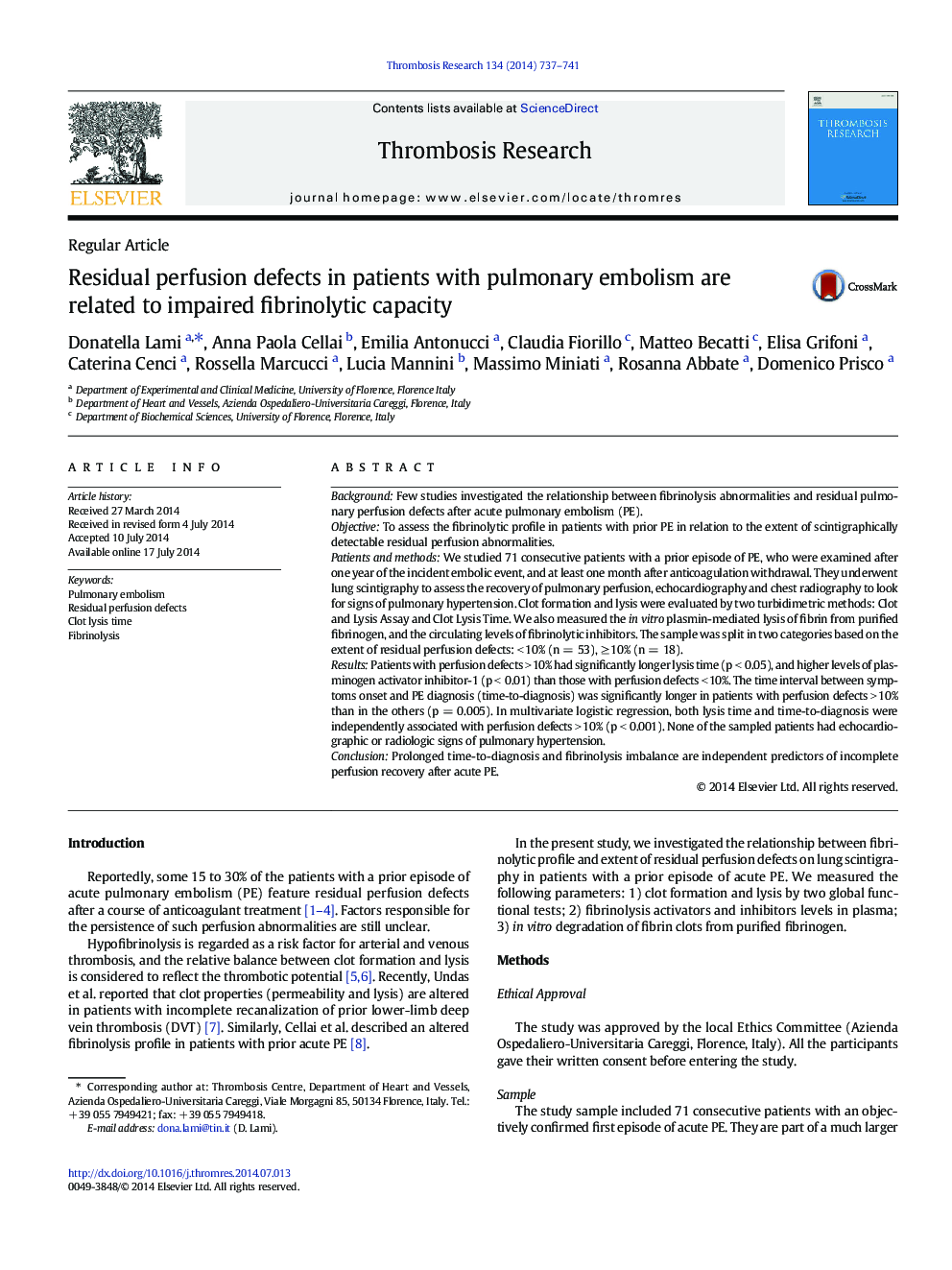| کد مقاله | کد نشریه | سال انتشار | مقاله انگلیسی | نسخه تمام متن |
|---|---|---|---|---|
| 6002054 | 1182963 | 2014 | 5 صفحه PDF | دانلود رایگان |
- With the present study, we investigated whether there is a relationship between an altered fibrinolysis and the extent of perfusion recovery in patients with a prior episode of PE.
- We measured the following parameters: clot formation and lysis by two global functional tests, fibrinolytic components in plasma; in vitro degradation of fibrin clots.
- Our data demonstrate that an impairment of the fibrinolytic balance documented by a lysis time is associated with the incomplete restoration of pulmonary perfusion after acute PE
BackgroundFew studies investigated the relationship between fibrinolysis abnormalities and residual pulmonary perfusion defects after acute pulmonary embolism (PE).ObjectiveTo assess the fibrinolytic profile in patients with prior PE in relation to the extent of scintigraphically detectable residual perfusion abnormalities.Patients and methodsWe studied 71 consecutive patients with a prior episode of PE, who were examined after one year of the incident embolic event, and at least one month after anticoagulation withdrawal. They underwent lung scintigraphy to assess the recovery of pulmonary perfusion, echocardiography and chest radiography to look for signs of pulmonary hypertension. Clot formation and lysis were evaluated by two turbidimetric methods: Clot and Lysis Assay and Clot Lysis Time. We also measured the in vitro plasmin-mediated lysis of fibrin from purified fibrinogen, and the circulating levels of fibrinolytic inhibitors. The sample was split in two categories based on the extent of residual perfusion defects: < 10% (n = 53), â¥Â 10% (n = 18).ResultsPatients with perfusion defects > 10% had significantly longer lysis time (p < 0.05), and higher levels of plasminogen activator inhibitor-1 (p < 0.01) than those with perfusion defects < 10%. The time interval between symptoms onset and PE diagnosis (time-to-diagnosis) was significantly longer in patients with perfusion defects > 10% than in the others (p = 0.005). In multivariate logistic regression, both lysis time and time-to-diagnosis were independently associated with perfusion defects > 10% (p < 0.001). None of the sampled patients had echocardiographic or radiologic signs of pulmonary hypertension.ConclusionProlonged time-to-diagnosis and fibrinolysis imbalance are independent predictors of incomplete perfusion recovery after acute PE.
Journal: Thrombosis Research - Volume 134, Issue 3, September 2014, Pages 737-741
